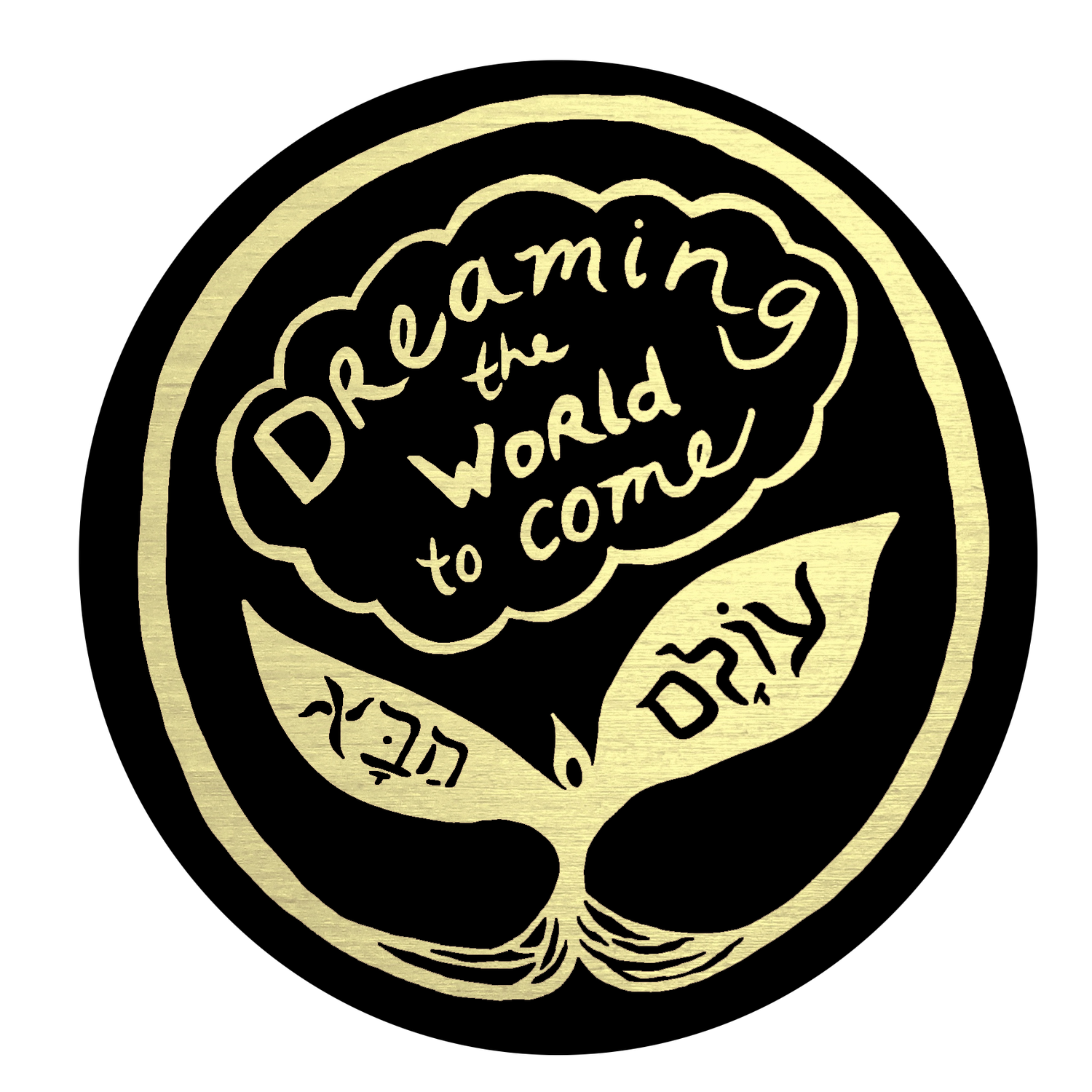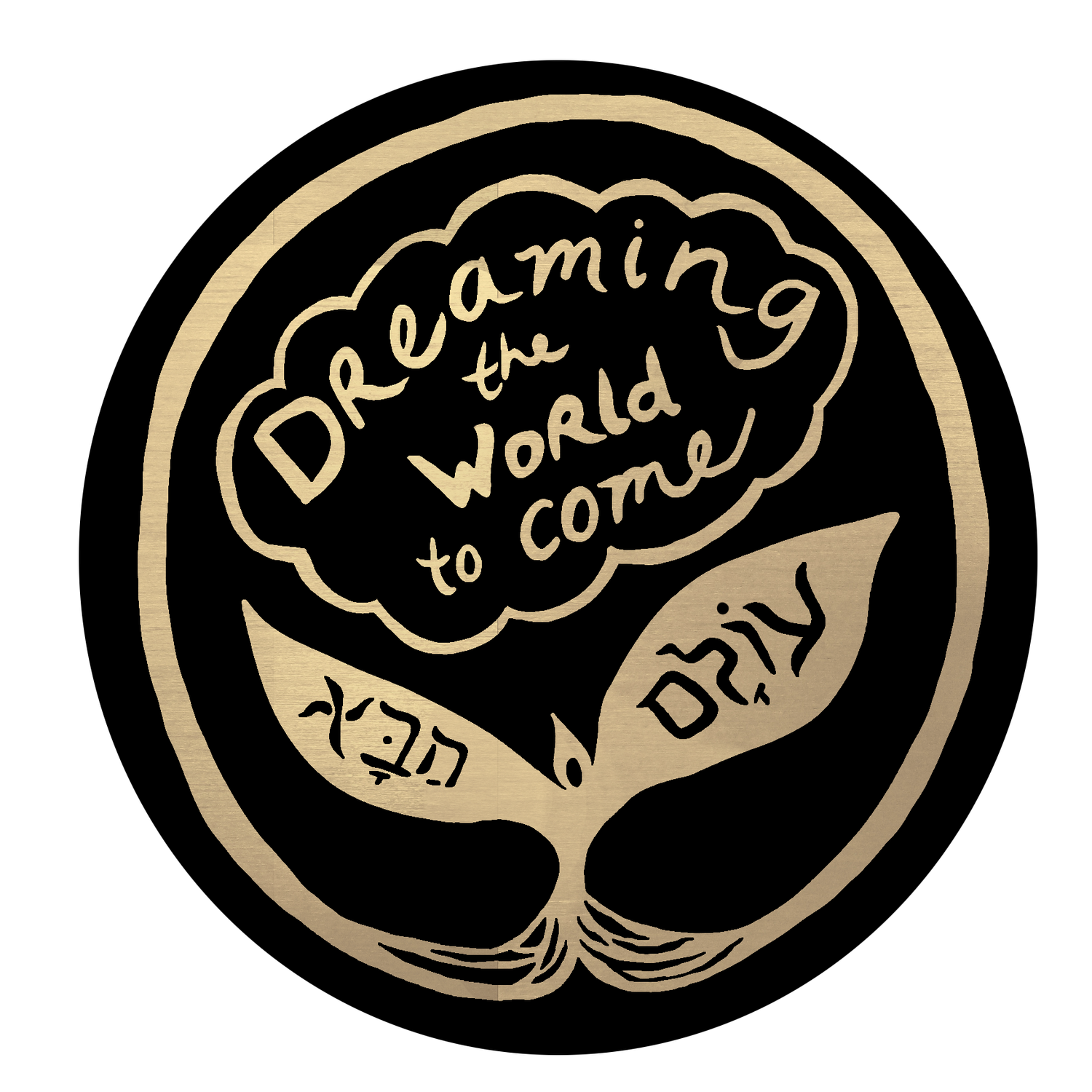Glossary
5784: The current year according to the Hebrew Calendar. This number is based on the calculations of 12th-century Jewish philosopher Maimonedes, who established year zero as the biblical date of Creation.
Adar I & Adar II: Adar is the month in which Purim falls, corresponding to February or March. During Leap Years, there is an extra Adar.
Allies: Those who are on our side or have our backs. This can include people, as well as ancestors, stones, plants, animals, or other beings that have been deemed “inanimate” by patriarchy and white supremacy, which many of us experience as living, supportive collaborators.
Ancestors / Ushpizot and Ushpizim: Those who lived before our time and continue to bestow blessings from the other side. These include ancestors of blood lineage as well as spiritual, cultural, or political lineage, or those with identities that paved the way for us, such as disabled or queer ancestors. The Hebrew word Av, which is a name of one of the Hebrew months, also means father or ancestor.
Ashkenazim: Jews from Eastern Europe, including the Pale of Settlement, who often receive white privilege.
Beta Israel: Jews from Ethiopia.
Capitalism: An economic system in which certain people or companies own the majority of the wealth and resources, and are able to make decisions that impact those who need money, food, shelter, etc. In capitalism, the world is divided into two categories: those who have things/ those who want things; those who sell things/ those who buy things. One common feature of capitalism is a high level of competition; the idea that there isn’t enough to go around and that you have to fight to get what you need, by being better/faster/smarter/stronger than other people.
Cheshbon Ha’Nefesh: Accounting of the soul.
Colonization: The formal process of an organized group or government taking land, resources, medicine, histories, and autonomy away from the existing Indigenous peoples.
Dayenu!: An expression of gratitude associated with the Passover story, declaring that even if God had not done all the things they did for us, “it would have been enough!”
Decolonization: A process of reversing the impacts of colonialism. While there are cultural, psychological, and spiritual aspects of a decolonization process, it must include actual return of indigenous lands to the original peoples.
Diaspora: The scattering of a people from their place of origin throughout the earth, offering opportunity for solidarity and cultural evolution based in “hereness.”
Doikayt: “Hereness,” in Yiddish.
Eichah/Lamentations: Prophesies composed by the prophet Jeremiah in the 6th century BCE while in Babylonian captivity.
Erev: Evening, twilight.
Feminism: A political, cultural, and spiritual movement based in the the inherent dignity of people who have been oppressed on the basis of gender.
Gregorian: Refers to the calendar introduced by Pope Gregory XIII in 1582, a solar cycle composed of 12 months of irregular lengths. Also called the western calendar or the Christian calendar, it is currently the most commonly used calendar in the world.
Hamsa: Also known as the Hand of Fatima or the Hand of Miriam, this is a symmetrical hand-shaped symbol of protection, often with an eye in the palm, that is associated with the divine feminine in Middle Eastern / North African cultures.
Havdallah: Literally meaning “separation,” Havdallah happens every week, one hour after sundown on Saturday, marking the end of Shabbat.
Hebrew calendar: A lunisolar calendar that tracks months according to the moon phases, adding an extra month every two or three years to keep it aligned with the solar year. It is an ancient agrarian calendar that evolved from the Babylonian calendar, and is currently primarily used to calculate dates of Jewish holidays, yarhzeits (death anniversaries), and Torah portions. The revitalization of Rosh Chodesh and earth-based feminist Judaism has led to increased interest in the Hebrew calendar as a way to track time in our daily lives.
Jews: People who share ritual practices connected to the Torah, with many variations. Jews have experienced ourselves as a cultural group, and are sometimes treated as a racial group. There are Jews of many ethnic and cultural backgrounds, with different experiences of racialization. (Only a few are mentioned here.)
Jews of Color: Jews of non-European heritage & mixed race Jews.
Chanukah: Festival of Lights in Kislev and Tevet, lasting 8 days, celebrated with candle lighting each evening.
Chag Ha’Banot: Festival of Daughters, a North African holiday, often associated with Judith, that falls during Chanukah on Rosh Chodesh Tevet.
Days of Awe: The High Holy Days, first ten days of Tishrei, from Rosh Hashana to Yom Kippur.
Lag B’Omer: 33rd day of Omer, bonfire ritual commemorating Shimon Bar Yochai’s death, in Iyar.
Leil Slichot: Day to begin prayers for forgiveness said in preparation for High Holy Days, in Elul.
Mimouna: A North African holiday on the day after Passover that marks the return to eating chametz or leavened bread, in Nisan.
Minor Fasts: There are four minor fasts, which last from sunup to sundown. These are: 1) Tzom Gedaliah, the day after Rosh Hashanah, commemorating the day Gedaliah Ben Ahikam was killed. 2) Asarah b’Tevet, the 10th of Tevet, marking the beginning of the siege of Jerusalem by Nebuchadnezzar. 3) Ta’anit Esther, the 13th of Adar (the day before Purim unless it falls on Shabbat), commemorating the fast of the Jewish people in preparation for Esther’s confrontation with Ahashueros and Haman; 4) Shiva Asar b’Tamuz, the 17th of Tamuz, which commemorates the day the Romans breached the walls around Jerusalem, leading to the destruction of the temple. There is one additional fast day that is in a slightly different category, which is Ta’anit Bechorim/Ta’anit Bechorot, the fast of the first-born, observed only by first-born children on the day before Passover, to commemorate the loss of the first-born in the Passover story.
Passover / Pesach: Festival of Liberation, celebrated with a long elaborate meal and storytelling, 8 days in Nisan.
Purim: Carnival Holiday, story of Esther, in Adar (Adar II in a leap year).
Rosh Hashanah: Head of the Year, 2 days, beginning of Tishrei.
Shavuot: Festival of Revelation, 2 days in Sivan, marking the end of the Omer period, observed by staying up all night studying.
Shemini Atzeret: Rain Festival, the day after Sukkot, in Tishrei.
Sigd: Meaning “Prostration,” Sigd is specific to the Beta Israel / Ethiopian Jewish community, falling 50 days after Yom Kippur, on the 29th of Cheshvan.
Simchat Torah: Celebration of the Torah, re-rolling the scroll back to the beginning, two days after Sukkot, in Tishrei.
Sukkot: Harvest Festival, a portal for joy when we make temporary outdoor shelters, 7 days long in Tishrei.
Tisha B’Av: Destruction of the Temple / day of inconsolable grief, 9th of Av. This is one of two Major Fasts, which lasts from sundown to sundown.
Tu B’Av: Love Holiday, in biblical times it corresponded with the grape harvest and girls would trade clothes, wear all white, and dance under the full moon, 15th of Av.
Tu B’Shvat: The Birthday of Trees, 15th of Shvat.
Yom Kippur: Day of Atonement, ten days after Rosh Hashanah, in Tishrei. This is one of two Major Fasts, which lasts from sundown to sundown.
Kabbalah / Kabbalists: Literally meaning “Receiving,” a Jewish mystical tradition developed in 12th century Spain. Drawing upon earlier mystical traditions documented in the Sefer Yetzirah, it offers a tree of life with ten unique “emanations” or sephirot that map between the eternal source and the material world. Kabbalists also use the Hebrew letters and Gematria to make meaning and see into deeper layers of everyday ideas and events.
Lunar calendar: Calendar based on the moon cycles.
Matanot La’evyonim: Gifts to the poor / wealth redistribution, part of the Purim tradition.
Me’uberet: Literally meaning “pregnant,” this is the Hebrew word used to describe Leap Years.
Mezuzah: A piece of parchment with Hebrew text written on it, rolled into a scroll and placed inside a decorative box that is then attached to a doorpost as an amulet or sign. It is traditional to kiss the mezuzah as you enter and exit through the doorway.
Midrash: Interpretive tradition and legends surrounding the Hebrew Bible.
Mishloach Manot: Gift baskets of food to friends and family, part of Purim tradition.
Mitzrayim: Narrow place. In Passover story, refers to Egypt, not to be confused with the modern state of Egypt.
Mizrachim: Literally meaning “east,” can refer to Jews from Mesopatamea and parts of northern Africa.
Netivot: Pathways, referring to the archetypes of Hebrew priestesses.
Olam haBa: The World to Come.
Omer / Counting the Omer: A 50-day portal between the second night of Passover and erev Shavuot, during which Kabbalists have constructed a process of moving through each sephirah on the tree of life, focusing on the energetic nuances of each day.
Parshat: Weekly Torah portion.
Patriarchy: A culture or society that gives men power and excludes and exploits women and people of other genders.
Restorative Justice: Strategies for addressing harm that can include both victims and perpetrators in trying to find a way to heal or recover from harm. These practices may happen within, in conjunction with, or outside of punitive or carceral justice models.
Rosh Chodesh: Head of the Month.
Sephardim: Jews from the Mediteranean including parts of northern Africa and southern Europe.
Sephirot: Realms or emanations of aspects of God on the Kabbalistic tree of life.
Shabbat: Day of rest, sundown every Friday to an hour past sundown every Saturday. Some Shabbatot have special names, such as Shabbat Shuva, which falls between Rosh Hashana and Yom Kippur, and Shabbat Shira, which is the Shabbat before Tu B’Shvat.
Shechinah: The indwelling presence of God / Goddess / Goddexx.
Shmita: Shabbat for the land, every seven years.
Tallit or Tallitot: Prayer shawl(s).
Talmud: Record of rabbinic discussion of Jewish lore and practice including material from the 2nd to the 6th centuries.
Tanakh: The Hebrew bible.
Torah: Ancient sacred texts preserved in a scroll (first five books of scriptures).
T’shuvah: Returning to wholeness.
Transformative Justice: Strategies for responding to conflict without involving the criminal justice system, by looking at root causes of social problems and seeking to address those rather than relying on punishment to control populations.
Verdant: Green, usually referring to plants.
White Supremacy: A system built on the belief that whiteness and white people are better than everyone else, and should dominate society. This belief system can show up in both subtle and extreme ways depending on context, and is perpetuated in both our actions and inactions when we don’t take time and care to challenge it.
Zohar: The central text of the kabbalah, written in 13th century Spain.
Some of these definitions have been adapted from the glossary of Sins Invalid’s Skin, Tooth, and Bone: The Basis of Movement is our People.
Find a term in your Olam haBa planner that you’d like to see defined here? Get in touch with us.

